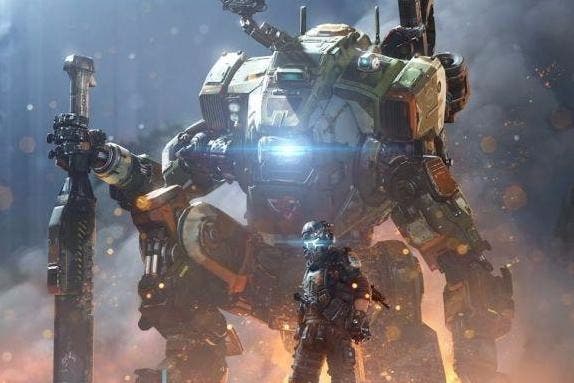Face-Off: Titanfall 2
Mech-tacular.
Titanfall 2 is a 60fps first-person shooter. On paper that might not sound particularly special. After all, it is the signature element that defines the Call of Duty experience, the standard that has come to dominate top-tier console-based first-person shooters to the point where 30fps challengers have had to evolve to match it. Case in point: both Battlefield and Halo have now joined the 60fps club. But what makes Titanfall 2 different, what makes it special, is that it does more than targets 60fps - it comprehensively delivers it. It feels great, but crucially, even in the most intense multiplayer action, it's consistently brilliant to play.
Performance is important to this game because it's an integral component of its feel. The mechanics in this title are exceptional - it starts with a supremely tight interface between player and game - and a commitment to the lowest possible latency. And the good news is that this all-important element of the experience is pretty much identical on both PlayStation 4 and Xbox One.
The team's attention to detail across platforms goes beyond the rendering set-up too. Respawn has optimised the movement of the game according to the controller you're using, as opposed to implementing a one-size-fits-all system. Handling of inertia and dead-zones is spot-on, regardless of the system you're playing it on. Titanfall 2 relentlessly processes your inputs with pinpoint precision and crucially, provides exceptional feedback. The melee is a supreme case in point - animation, physics and audio working together to produce a highly satisfying result from an audacious close-up kill.
Respawn's latest isn't the most beautiful shooter on the market, but for Respawn, pretty visuals don't take precedence over the feel of the game. The franchise kings like Battlefield and Call of Duty will drop frames in order to service the visuals, or to support gargantuan 64-player battles in the case of DICE's epic. They're willing to compromise on the feel of the game in order to deliver improved graphics, signature set-piece moments or a more ambitious networking feature set. But Titanfall 2 doesn't. The quality of the action, the absolute consistency in the feel of the experience - that makes it different, that makes it special.
Titanfall 2's rock-solid frame-rate delivers similar results to 343's Halo 5 - a game that introduced a number of technical check and balances to ensure a sustained, consistent 60Hz refresh. And in employing a dynamic resolution scaling buffer, Respawn Entertainment is actually using a very similar technique in ensuring its consistency. When we looked at the beta, Respawn had seemingly settled on a fixed, sub-native framebuffer for the Xbox One and PS4 releases, backed up by an impressive temporal anti-aliasing solution.
First impressions suggested that this remained in place on retail code, but further investigation confirms that pixel-count scales in the final game according to GPU load. For the majority of the experience, this actually works out to be a positive. For much of the game, PS4 resolves at around 1000p, and Xbox One around 810-828p. Gaining absolutely accurate metrics is difficult owing to the temporal super-sampling anti-aliasing, which makes it very difficult to find the hard geometric edges essential for pixel-counting.

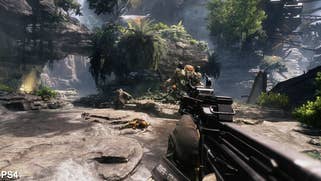
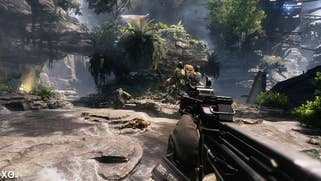
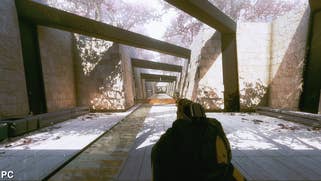
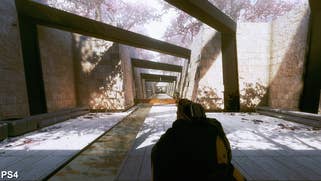
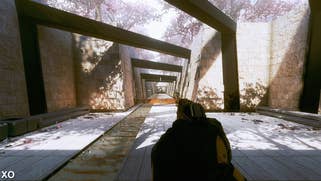
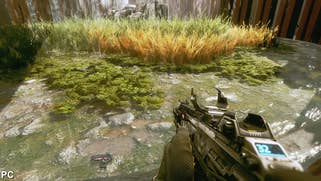
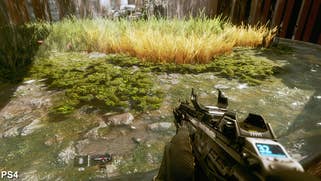
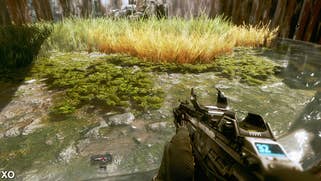



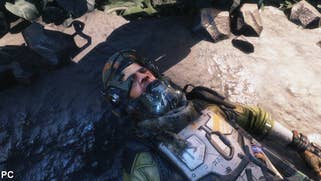
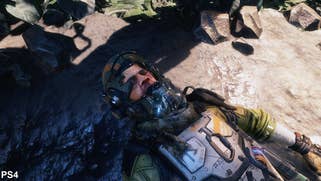







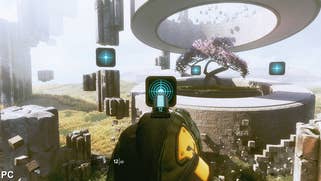
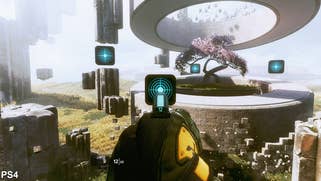

However, the Titanfall 2 beta dropped frames hard on both systems, so yes, resolution will drop below the beta's fixed framebuffer standard - we've seen PS4 drop to 720p in the most intense of scenes, while Xbox One will fare worse. We've yet to determine how low it drops - temporal reconstruction is really difficult to work with, but it can look bad. We've actually recorded edges that range from 480p upwards - however, Titanfall 2's post-process pipeline may be working with lower resolution alpha effects, reducing pixel count where transparencies intersect with geometric edges.
By and large, Respawn's gamble pays off though - especially on PlayStation 4, where the substantial drops to pixel-count are less sustained, and where the image is palpably cleaner, especially in multiplayer. But it's interesting to note that the PC version delivers a marked improvement to image quality - even without moving resolution beyond 1080p. The softness in the presentation lifts somewhat and it's clear that the image is resolving significantly more detail, though the impact is mostly reserved for areas of gameplay where the game's impressive post-process pipeline isn't quite getting a full work-out.
What's impressive about the PC's fixed resolution framebuffer is that the TSAA option actually works here in a similar manner to Far Cry 4 - the combination of 1080p plus the super-sampling offered by the temporal component adds an additional layer of sheen to the game. Without the dynamic resolution scaling, the PC version's TSAA also seems to lack the occasional pulsating edge artefacts seen on console.
Additional performance testing: PS4 vs Xbox One campaign frame-rate analysis
The PC's impressive showing at 1080p is good news for the PlayStation 4 Pro too - speaking to Respawn about this, the upper and lower bounds of the dynamic resolution scaler are tweaked here - native pixel-count will move significantly higher than 1080p if you're playing on a 4K screen, while those with full HD screens get a downscaled output. In effect, PS4 Pro offers both temporal and spatial super-sampling - it should look very nice, and we'll report back on that as soon as we can.
PC offers refinement elsewhere too, but game-changing improvements are few and far between. Asset quality in terms of textures and geometry is a match with both console games - and it's worth noting that art in general is an almost generational leap from the first Titanfall, to the point where everything still looks great at 4K. However, in terms of nuts and bolts improvements, the boosts are fairly mundane. Shadows - of course - get a resolution upgrade, while the quality cascade shows a big improvement. The further away you get, the less defined shadows become on the consoles, while retaining quality on PC. The PC also benefits from additional depth with the use of an ambient occlusion post-process, which appears to be absent on the console renditions of the game.
We would also expect to see improvements in the post-process pipeline, but owing to Titanfall 2's highly dynamic nature, recreating the like-for-like situations is very difficult. The bottom line is clear though - PC adds scalability to an already excellent console experience, though the base feature set is mostly a match.
Titanfall 2 - the Digital Foundry verdict
There's definitely a pecking order to Titanfall 2 in terms of technical accomplishment. PC sits at the top of the pile - it's a highly optimised title, very scalable and it offers the best visual return when paired with the right hardware. The PlayStation 4 version follows on from there - essentially the same experience, but operating with a softer look.
Last, but certainly not least, we have Xbox One. It has the same robust frame-rate, and by and large, the temporal super-sampling system works quite nicely. However, when the engine is under excessive load - especially noticeable in the most intense multiplayer, the TSAA can look poor, to the point where still-shots show an almost water-colour like effect in post-process heavy scenes. Thankfully though, such instances are relatively infrequent but the key differentiator here is the perception of consistency - PS4 resolution can scale dramatically, but in the heat of the action it's rare that you actually pick up on it. Whatever the lower bounds of the scaler are on Xbox One, it definitely drops very low - enough to break the illusion.
But Titanfall 2 is a game built upon a combination of insanely good mechanics and the tightest, most responsive interface between player and game we've seen for a long time. To all intents and purposes, this is a true 60fps shooter. It doesn't just target 60fps and hope for the best, it delivers it consistently with only the most intense of Titan on Titan scenarios breaking that lock. And the good news is that remains consistent across all three versions. There are a lot of great games coming out demanding your attention, but Titanfall 2 offers the most fun we've had from a shooter in a long time.
